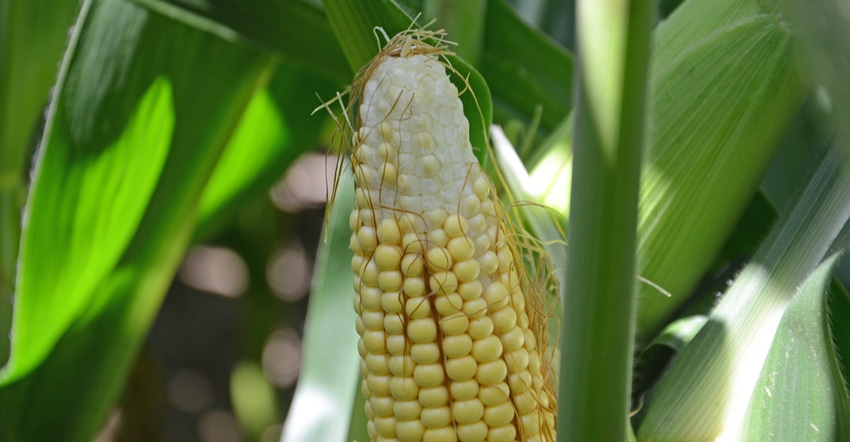
Estimating corn yields before harvest means pulling ears at random within a specified area, usually 1/1,000 of an acre, and evaluating them for number of rows of kernels per ear and number of kernels per row. If you repeat the process at several locations, you can get a feel for what type of yield to expect.
“We have pulled some ears already in the Corn Watch ’22 field,” says Dave Nanda, director of genetics for Seed Genetics Direct. “Some ears are filled to the tip, but it appears some have aborted some tip kernels. How many kernels are aborted varies from ear to ear. Aborted tip kernels translate into lower yield because there are fewer total kernels per ear. Spread that over 32,000 to 34,000 ears per acre, and it means total fewer kernels produced, which means lower yield.”
Related: Why does smut show up in cornfields?
Nanda says genetics can play a role in how much blank cob forms at the tip of the ear. Usually, however, true tip kernel abortion is a function of weather conditions during pollination and grain fill.
“If you have hot, dry conditions at pollination like we saw in some areas this year, including in the Corn Watch ’22 field, you will likely see more of it,” Nanda says. “It all depends on timing. Tip kernels pollinate and form last, so they’re the first aborted if the plant determines conditions won’t allow it to fill and finish all kernels on an ear.”
Here are examples to show how tip abortion can affect yield:
1. No aborted tips. Suppose you check yield in 1/1,000 acre and find ears filled to the tip. There are an average of 17 rows of kernels per year, with 38 kernels per row and 32,000 ears per acre. Kernel size is average. The yield estimate is: 17 × 38 = 646 kernels × 32 ears per acre = 20,672 kernels per acre. Dividing by 90 as the factor for average-size kernels, estimated yield is 230 bushels per acre.
2. A few aborted tips. You find a few ears with aborted tips and fewer kernels per row along with ears filled to the tip. Number of rows, ears per acre and kernel size remain the same, but number of kernels per row drops to an average of 35. The new yield estimate is: 17 × 35 = 595 × 32 = 19,040. Divided by 90, that comes to 212 bushels per acre.
3. Majority with aborted tips. Suppose most ears have aborted tip kernels. This time you find an average of only 32 kernels per row. Other factors remain constant. The new yield estimate is: 17 × 32 = 544 × 32 = 17,408. Divided by 90, that’s 193 bushels per acre. Widespread kernel tip abortion meant an average of six fewer kernels per row, dropping the yield estimate by 37 bushels per acre.
About the Author(s)
You May Also Like




